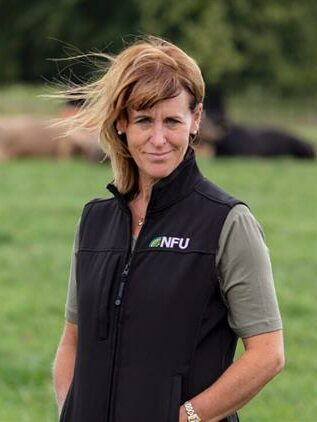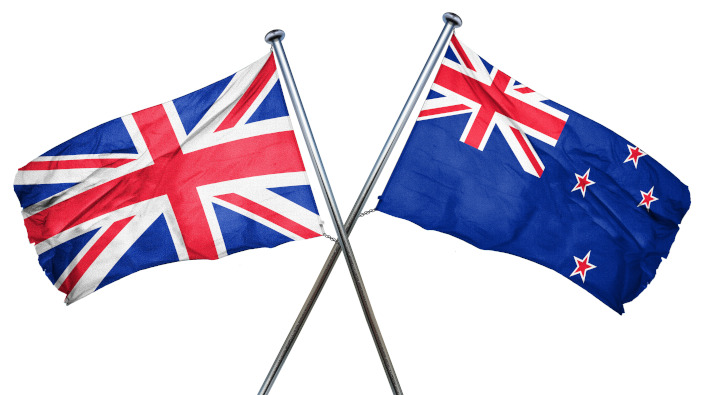According to the Department of International Trade (DIT), as of February 28, 2022, New Zealand (NZ) and the UK have finalised a Free Trade Agreement (FTA). The deal was signed in-person by the UK’s International Trade Secretary Anne-Marie Trevelyan and New Zealand Minister for Trade and Export Growth Damien O’Connor.
This deal sees NZ eliminating all tariffs on UK products entering the country from Day 1 of the agreement entering into force, while the UK has agreed to eliminate 96.7% of tariffs for NZ products entering the UK from Day 1.
For the UK’s sensitive agricultural products (beef, sheepmeat and cheese), a transitional rate quota (TRQ) will be applied.
For beef, tariffs will be eliminated over a period of 10 years. During this time, a TRQ of 12,000 MT in year one, rising in equal increments to a TRQ of 38,820 MT in year 10, will be applied. Any product exceeding the TRQ will be subject to the World Trade Organisation’s (WTO) most favoured nation tariff rate (MFN).
Between years 11 and 15, a product-specific safeguard will be in place, limiting beef imports into the UK to 43,056MT in Year 11 and rising in equal increments to 60,000 MT in year 15. Any product exceeding this safeguard will be subject to a 20% tariff. This safeguard will be removed after year 15, at which time beef trade will be fully liberalised.
For sheep meat, the UK will liberalise trade after 20 years. As for beef, a transitional TRQ starting at 35,000 MT for years one to four, rising to a TRQ of 50,000 MT for years five to 15 will be implemented. Any product exceeding these quantities in any given year will be subject to WTO MFN tariffs. This TRQ is for any given year and will only be triggered once the WTO country specific TRQ of 114,000 ton has been filled by 90%.
Between years 16 and 20 a product specific safeguard will be in place, as for beef, meaning the UK sheepmeat sector will have some protection for 20 years, after which trade will be fully liberalised.
In the dairy sector, butter tariffs will be eliminated over five years in six equal reductions. The transitional quota will open at 7,000 MT and increase in equal instalments to 15,000MT in year five.
Cheese will also become tariff free over five years, with the transitional quota starting at 24,000 MT and rising in equal instalments to 48,000 MT by year five.
There is currently no recognition of products of geographical indication (GIs), within the FTA, but there is a commitment that if NZ were to implement such a scheme domestically, that the UK would also benefit from similar protection.
Like the Australian FTA, Rules of Origin (RoO) are designed to facilitate trade between the two parties and make is easier for traders and customs authorities to prove country of origin. For agricultural products country of origin will be determined by change of tariff classification and specific processing rules (for example grinding or refining), reflecting where most of the processing has taken place. There will also be a 15% tolerance threshold for non-originating materials by value.
This FTA will also build on the Sanitary Agreement, of which NZ and the UK already benefit; recognising the equivalence of sanitary measures maintained by both countries for the protection of public and animal health. Importantly there is a commitment that sets out the understanding that low-risk food products within the scope of the chapter will not require health certification, other than for phytosanitary purposes. There is also a commitment to enhancing cooperation on antimicrobial resistance.
On animal welfare, there is a non-regression and non-derogation clause not to weaken animal welfare for farmed animals, to encourage trade. There is recognition that New Zealand and the UK’s farming practices are substantively different, but each country accords a high priority to animal welfare in those practices and that the different systems provide comparable outcomes.
The agreement also stipulates that NZ will not seek any further market access that may result from the UK’s accession to CPTPP.
The Trade and Agriculture Commission will now scrutinise the agreement, for a three-month period, then government and select committees will perform further inspections before the process of ratification is triggered – which is likely to take until the middle of 2023.

However, NFU President Minnette Batters believes that her previous concerns for British farmers, in view of the UK-Australian and now the UK-New Zealand trade deal, are ringing true.
Ms Batters responded to the signing of the UK-NZ trade deal: “This deal takes the same approach as the UK-Australia deal in eliminating tariffs for agricultural products, meaning that even for sensitive sectors like beef and lamb, dairy and horticulture, in time there will be no limit to the number of goods New Zealand can export to the UK.”
She added: “The government’s approach to trade deals is not the individual deals themselves but the cumulative impact of each deal when added together. The government is now asking British farmers to go toe-to-toe with some of the most export-orientated farmers in the world, without the serious, long-term and properly funded investment in UK agriculture that can enable us to do so; the sort of strategic investment in farming and exports that the New Zealand government has made in recent decades.”
Ms Batters concluded: “There remains an urgent need for government to have a coherent approach across all of its departments to focus on UK farming’s productivity, as well as recognise and remedy the contradictions within current domestic policy, which is still woefully sparse on the detail of how farmers will be supported to become competitive food producers at a time when food security is an increasingly important concern.”


